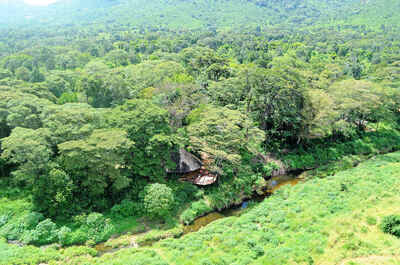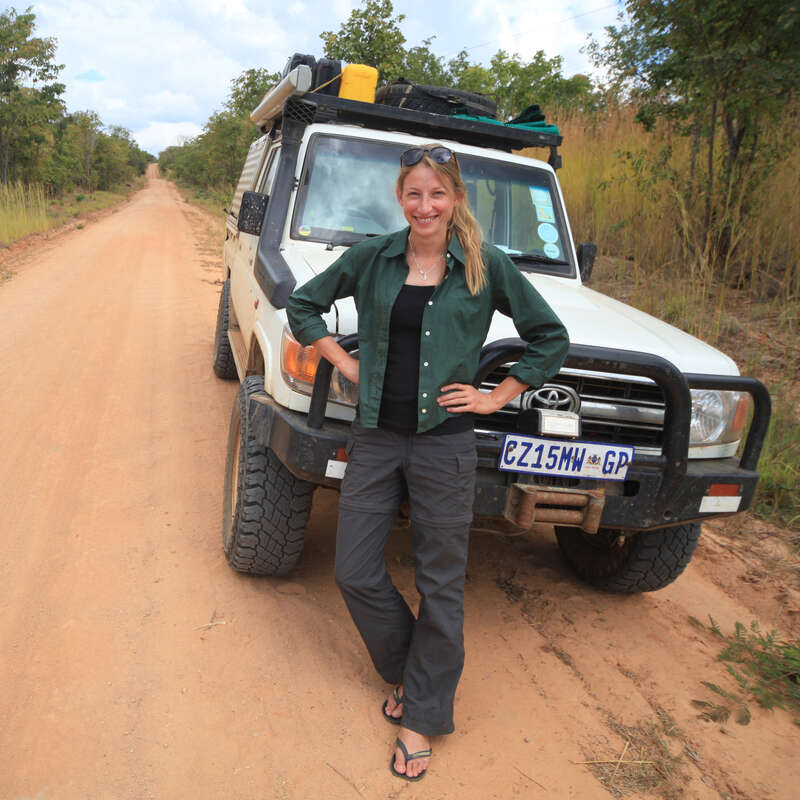About Kitich Forest Camp
This legendary mountain forest camp is one of Kenya's finest bush experiences, with outstanding bird and plant life and wonderful elephants.
Kitich Forest Camp is the stuff of jungle dreams. The camp specialises in exciting walks in the hills, taking in bush, river margins and dense forest, with excellent encounters with elephants, profuse birdlife, dazzling butterflies and prehistoric cycad plants all on the menu. But what most distinguishes Kitich is its location, on the banks of the cool, clear Ngeng river, far into the territory of the Samburu people, who care deeply for this part of Kenya and safeguard it as the Mathews Range Forest Reserve.
Our view
We've been dreaming of visiting Kitich for decades. When the chance finally came it didn’t disappoint, and our subsequent visits have been equally enjoyable. This is a wonderfully rustic, forest camp for people who yearn for the remote places on earth, who love the shady intensity of the equatorial forest and relish the chance to try out a macro lens on insects and plant life as much as a telephoto on birds and beasts. With its wonderful retinue of loyal, Samburu staff and guides, excellent food and comfy, down-to-earth accommodation, we have no hesitation in recommending Kitich for reasonably fit and adventurous safari-goers, looking for something a little different.
Accommodation
6 tents
Children
Great for adventurous children of all ages.
Open
All year
Activities

Birdwatching

Cultural excursion

Elephant encounter

Guided walking safari

Private activities
Traveller reviews of Kitich Forest Camp
1 real, un-edited reviews from Expert Africa's travellers.
Arrived 21 Sep 2024, 3 nights
"Kitich Forest Camp review"
Overall rating: Good
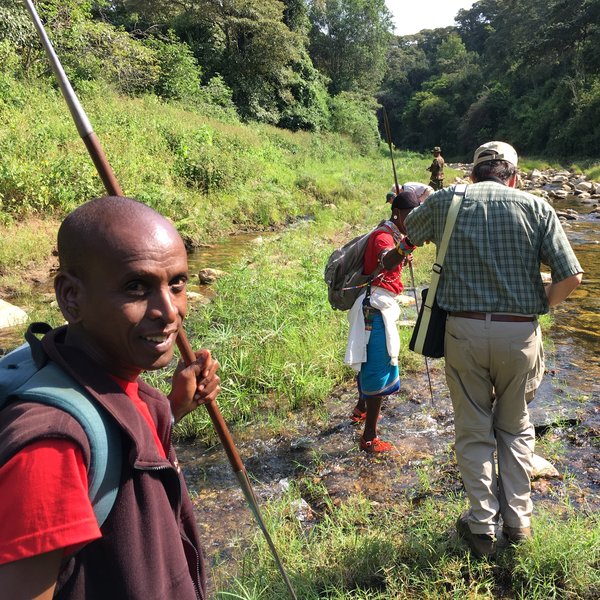
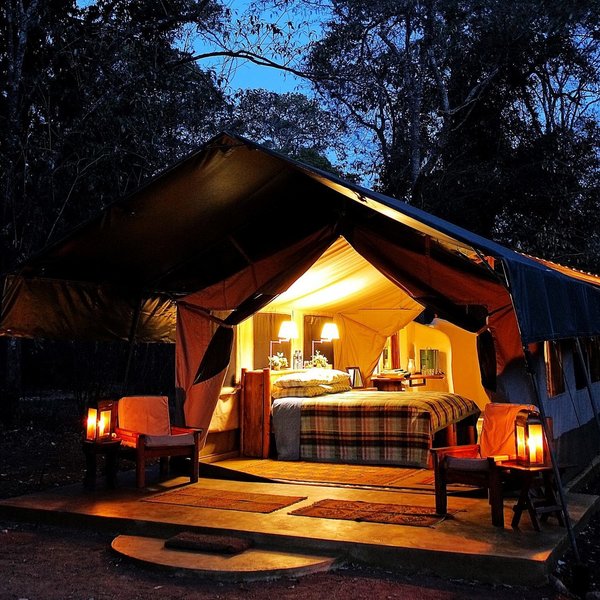
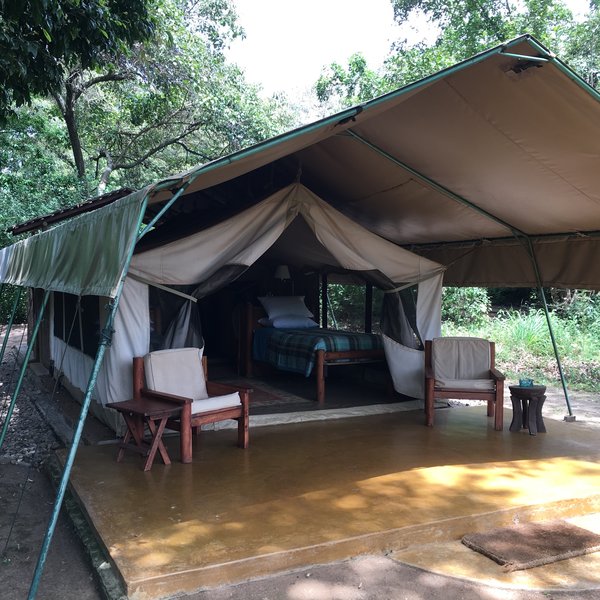
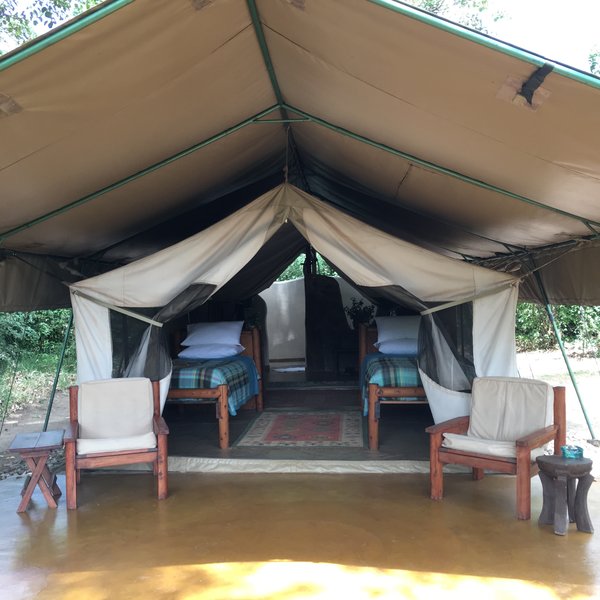
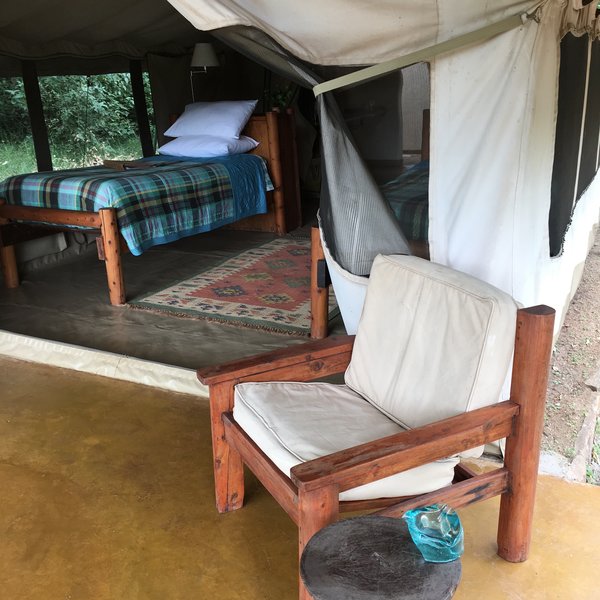
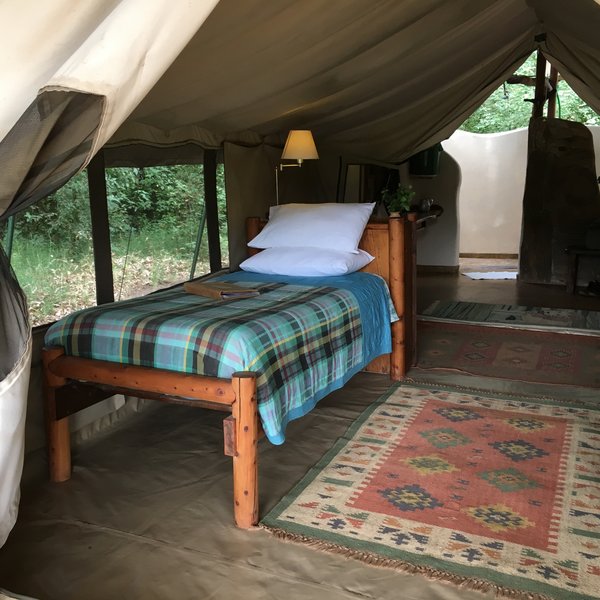
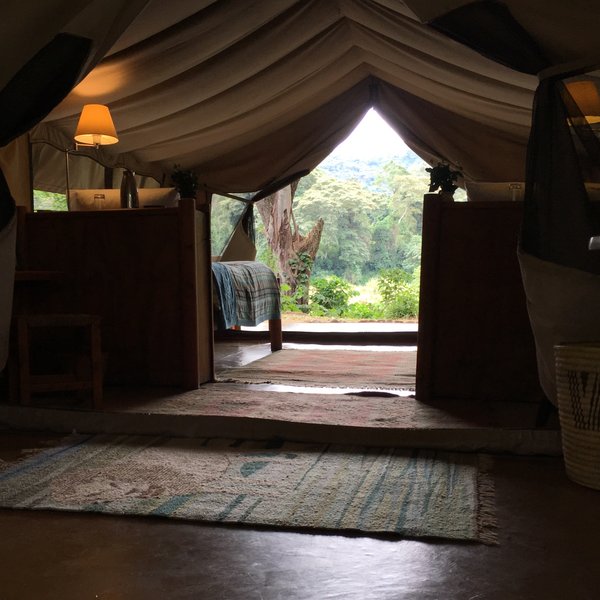
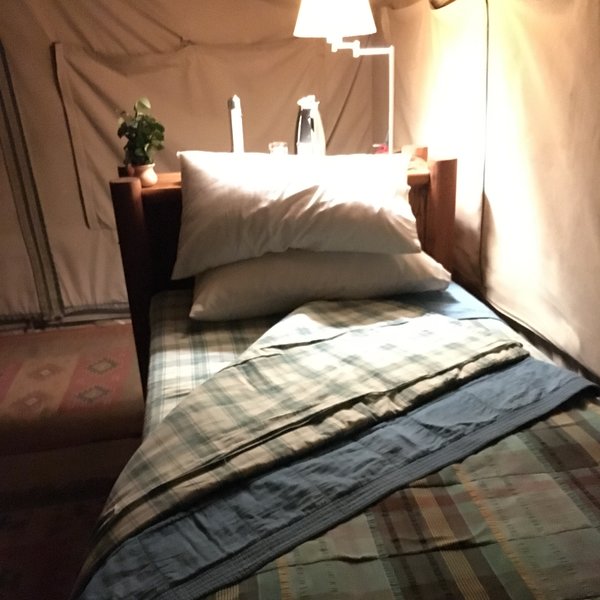
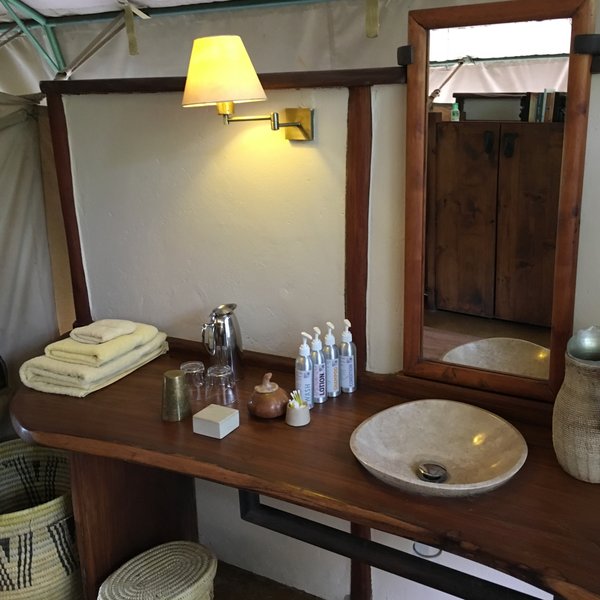
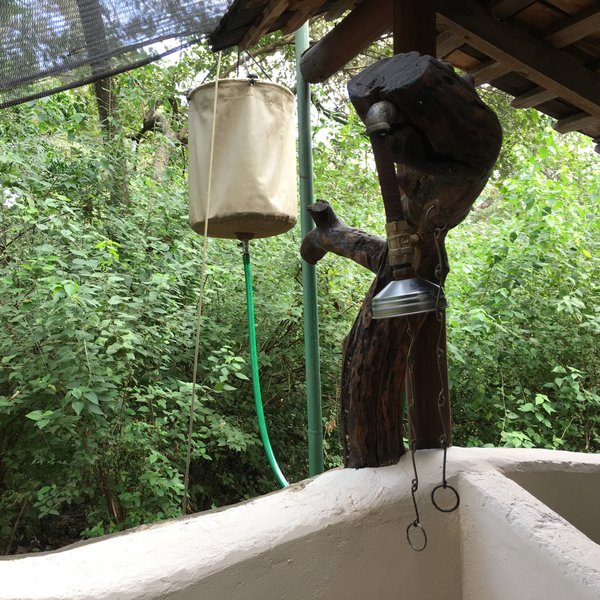
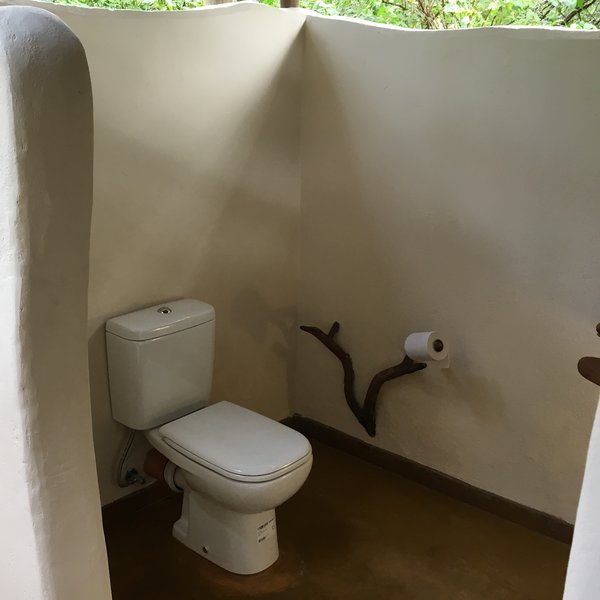
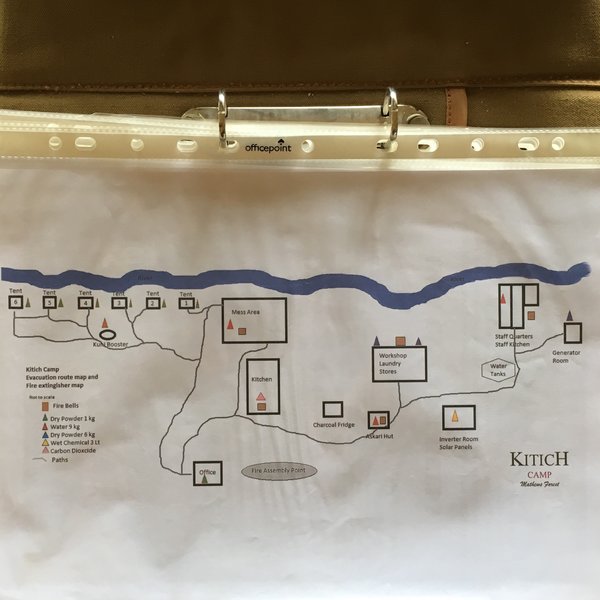
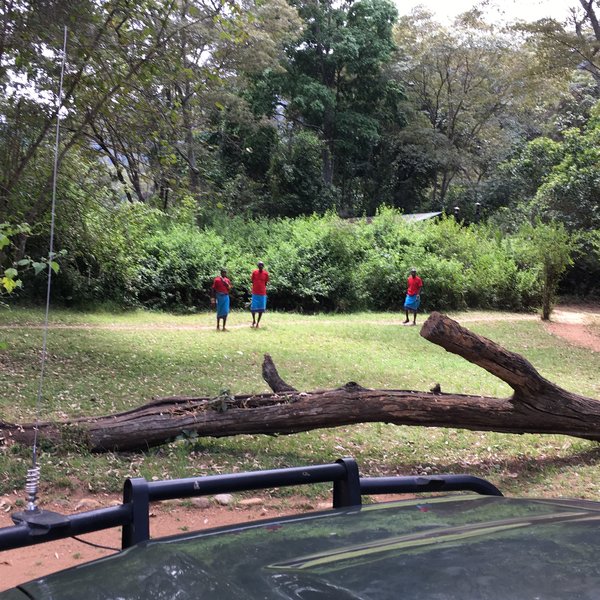
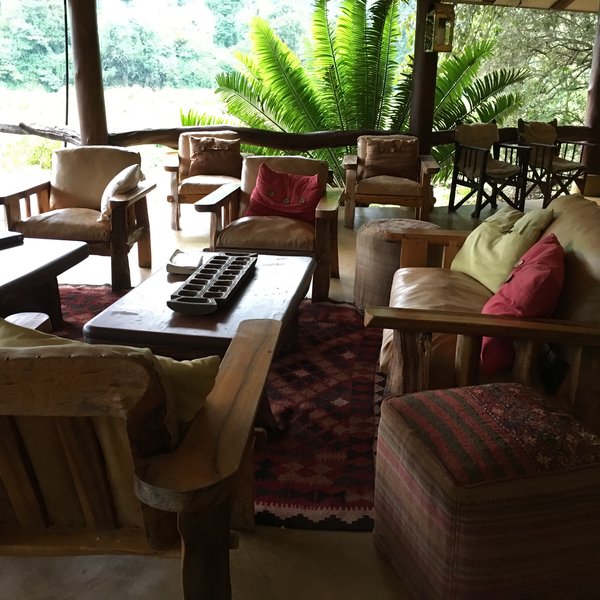
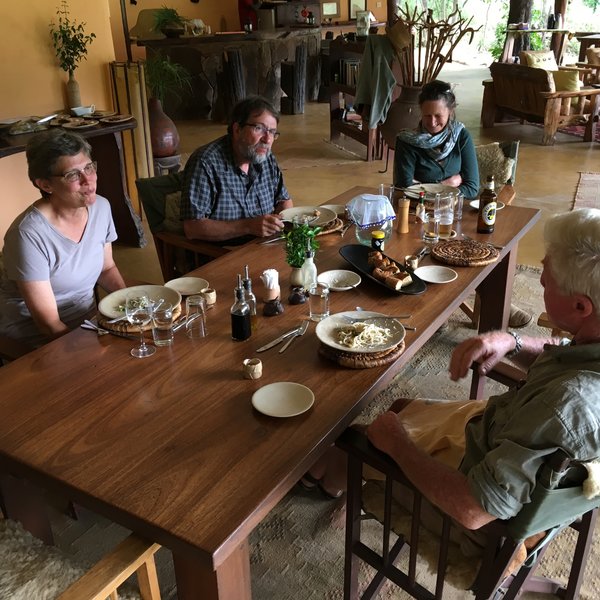
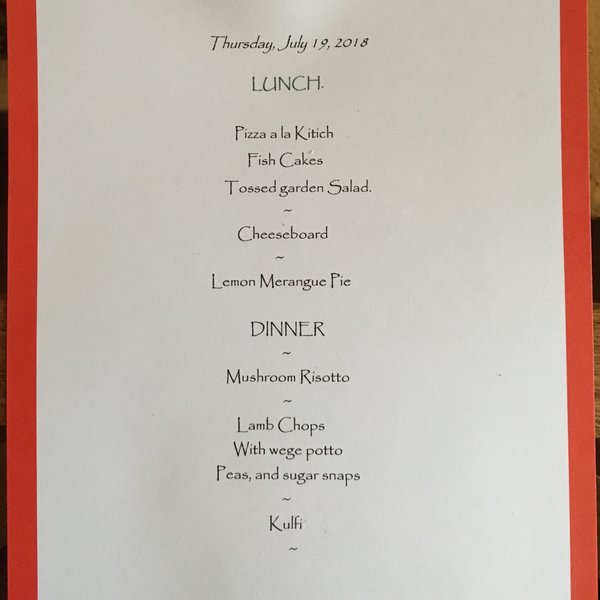
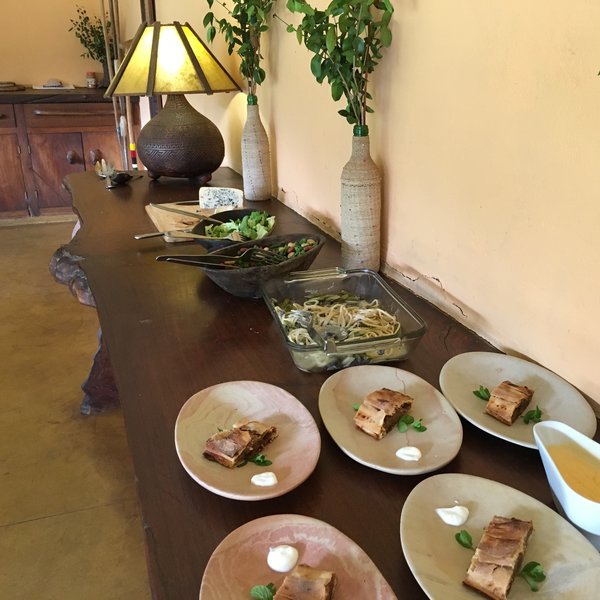
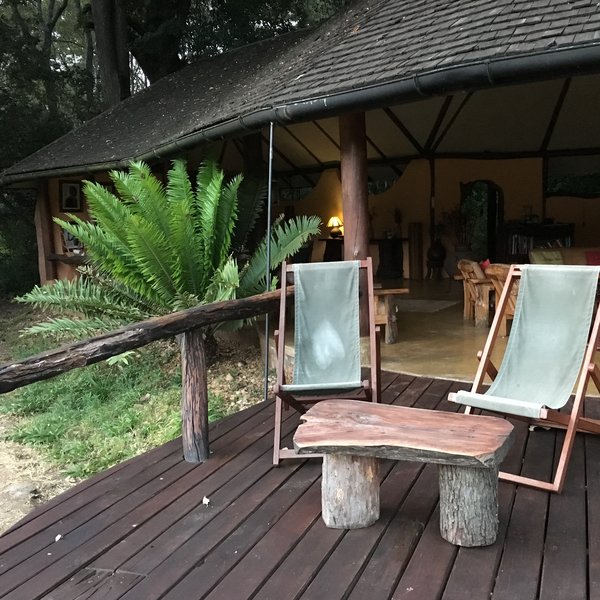
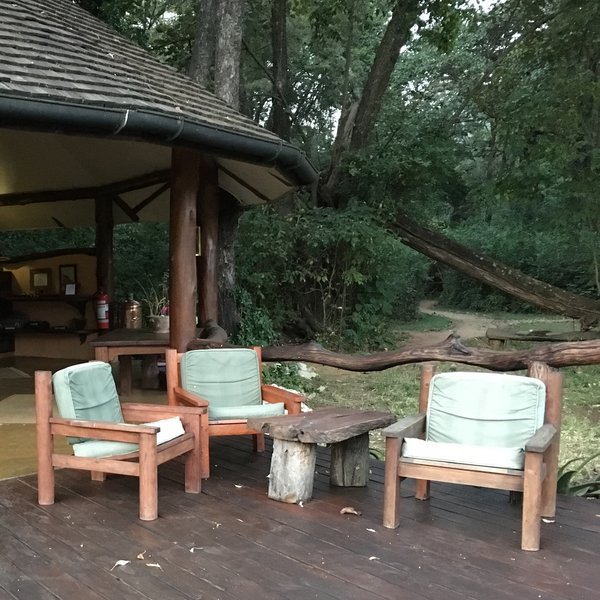
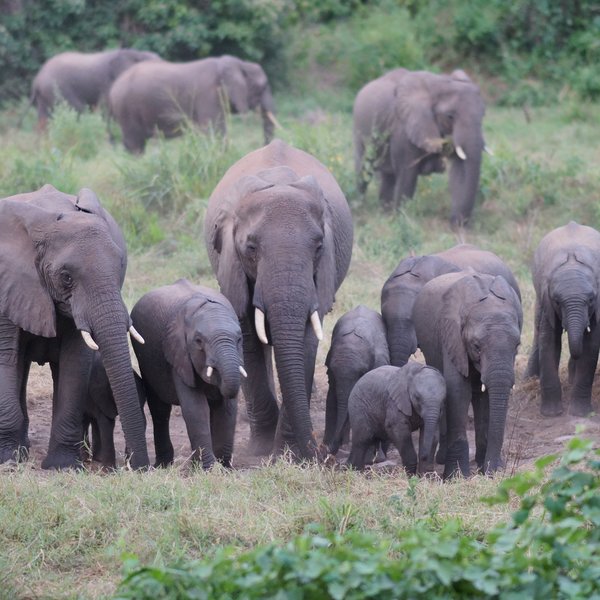
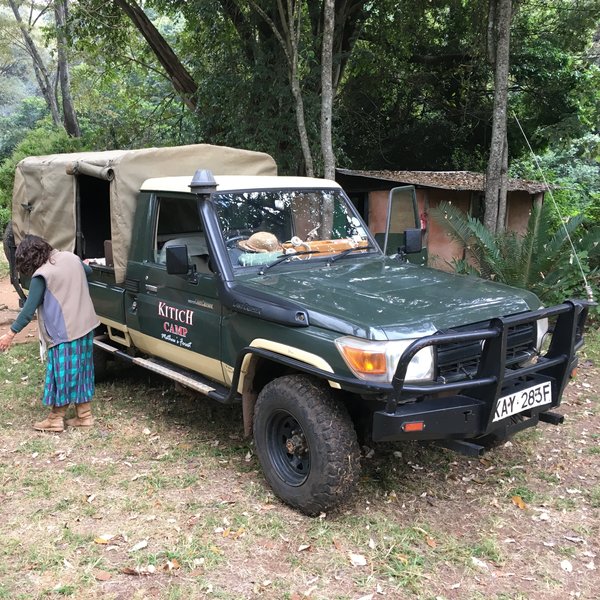
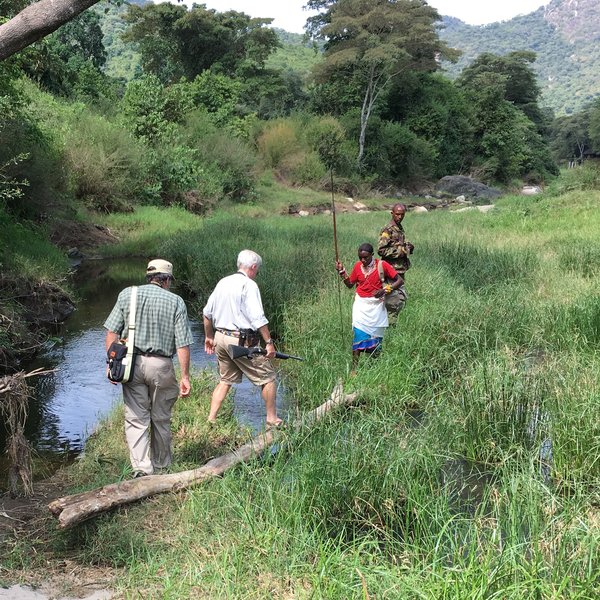
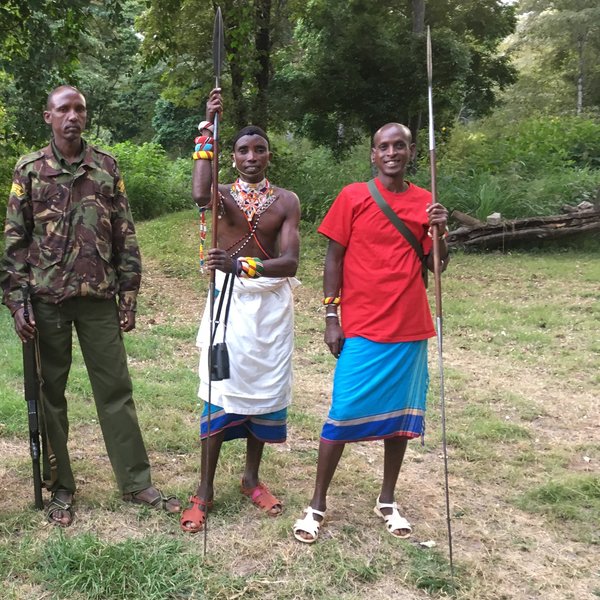
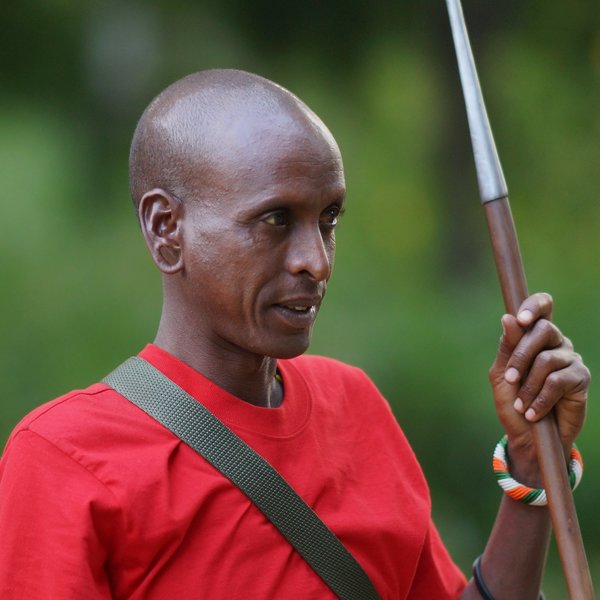
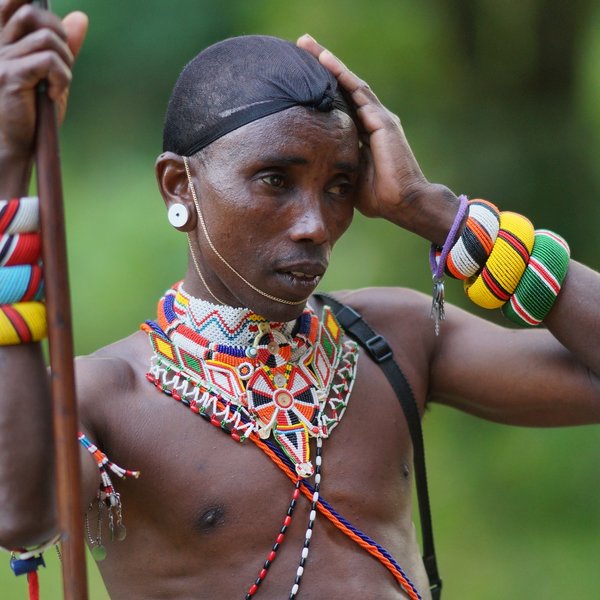
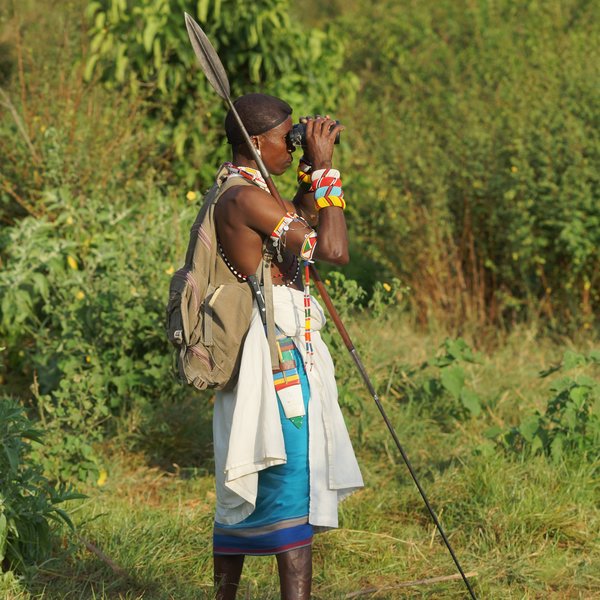
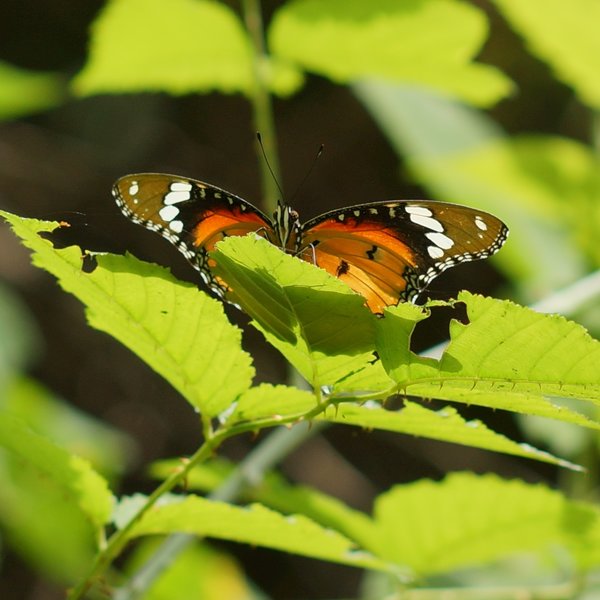
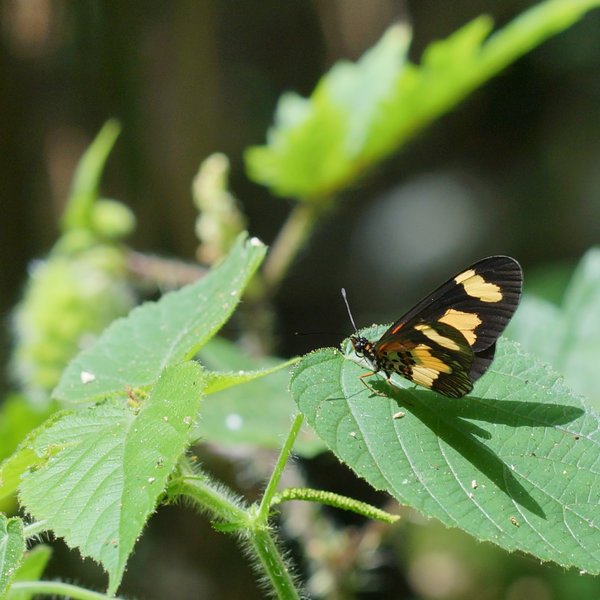
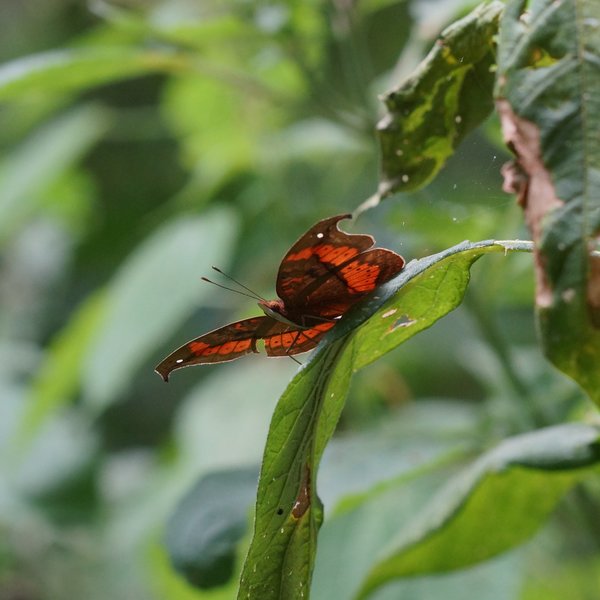
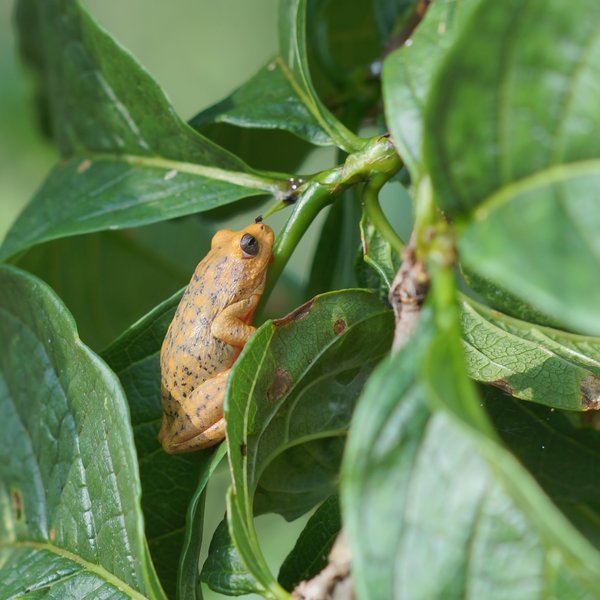
Expert Africa's gallery
When we travel we take lots of photos ourselves to give you a real and un-edited view of the safaris. See our 30 pictures of Kitich Forest Camp to get the candid view.
View galleryKitich Forest Camp: Our full report
Located well off the beaten track, Kitich lies at an altitude of 1,330m on the western slopes of the Mathews ...
... range, a lushly forested Afro-montane “sky island” surrounded by semi-desert plains. Ol Donyo Lenkiyio (2,375m, or 7,790ft above sea level) is the highest point in the central cluster of these gaunt mountains, known as Lenkiyio to the Samburu people. The Mathews range is protected by the Mathews Range Forest Reserve, which lies within the 900km² Namunyak Wildlife Community Conservancy, a Samburu community conservancy. Local Samburu warriors and elders staff Kitich and work as guides and the camp provides an ideal location for exploring this region, which is one of northern Kenya’s best preserved highland forest ecosystems.
Arriving at Kitich, you’ll either make the fairly long and arduous journey by road from the nearest scheduled airstrip at Kalama, near the Samburu National Reserve, or drop into the camp’s local airstrip at Ngelai, by private charter flight, from where it’s a 45 minute drive to camp. The last 20 minutes of the approach are up a small earth road through increasingly dense forest, which finally flattens as it emerges into a grove of tall trees on the bank of the Ngeng River. The road was built by the camp’s founder and it stops here.
The camp was previously owned by the pioneering Kenya Italian, Giulio Bertolli, of the olive oil dynasty. Bertolli lived up here for 12 years – "the best years of my life!". He had bought the camp from the conservationist Miles Burton, who established Kitich in the late 1970s shortly before dying in a plane crash. In 2009 Kenyan safari notable Stefano Cheli purchased the camp before selling in 2021 to the current owners. Over the years the camp has maintained the same ethos and in many ways not changed a great deal.
The central parts of the camp consist of a simple, wood-shingle roofed, open-plan dining and lounge area. Furnishings comprise sheep skin draped deckchairs and comfy armchairs, with plenty of coffee-table books filled with inspiring photos. Guests at Kitich usually eat together at the large communal dining table.
The lounge allows you to spot birds and look out for the approach of elephants, which regularly arrive on the opposite bank as the sun goes down, to drink, tusk the earth and frolic. A campfire is often lit in the evenings for pre- or post-dinner drinks.
The six, traditional guest tents are set on concrete plinths and ranged along a 150-metre stretch of the southern river bank, with #1 closest to the central areas and #6 furthest to the west. All are in classic, fully mosquito-proof, safari style, three of them with double beds, three with two single beds which can be moved together to form doubles. One tent is a little larger than the others and can take a double bed and two single beds. The tents are fitted with en-suite, solid-walled, partly open-air, cement-floored bathrooms at the back. The bathrooms have flush toilets and washstands with a hot water tank and jug. They use the safari shower system – you order your hot water whenever you want a shower and an attendant fills your tank. The tents have 24-hour lighting and power-points, supplied entirely by solar panels which charge the camp’s batteries.
The main furnishings in each tent are traditionally styled, comfortable but verging on functional rather than luxurious, with plainly constructed twin or double beds, and warm bedding (necessary at this altitude in the forest, and enhanced by hot water bottles), a clothes cupboard, writing/dressing table and stool, and chairs on the tent deck. A colourful rug or two softens the vinyl tent floor.
The main activities at Kitich are extended, guided forest walks. A popular route covers around 11km (7 miles) and winds through the tall trees of the Mathews forest along the east bank of the Ngeng River as far as a delightful swimming spot, often including a picnic lunch on the rocks. You’ll be accompanied by two Samburu guides, plus an armed forest ranger. On a previous visit among many birding highlights we saw elephants (and heard many more), came upon a huge cobra rushing over our path where it crossed a grassy clearing, and saw the tawny flash of a lioness as she leapfrogged from rock to rock across a shallow part of the river course (we followed her tracks along the bank for the next hour). The forest is home to 150 varieties of butterfly and more than 350 bird species. Impressive, prehistoric cycad plants are everywhere. Walks often pause for a bush lunch on the other side of the river - which offers the opportunity for flagging walkers to get a lift back to camp.
Multi-day hikes can be organised by the team allowing adventurous travellers the opportunity to hike the Murit Pass with camels or donkeys - a three night fly-camping experience. Closer to Kitich, shorter walks take place on the north bank of the river, or down the earth road leading to Wamba, where your guides can turn you left or right into the forest at any point. On a past visit we were pinned to the spot by the presence of elephants just yards away as our guides skilfully negotiated a silent, tactical retreat. Kitich has no shortage of memorable experiences.
Another possible outing, as a change from the forest, is to drive down to Lolgiriani livestock market, about an hour south of Kitich, which takes place every Thursday.
In theory it is possible reach Sarara from Kitich, by a 15km route straight across the Mathews Range. Local people take this route on foot and motorcycle, and Kitich plans to have quad bikes to enable an excursion to Reteti Elephant Orphanage.
Activities
Birdwatching
Cultural excursion
Elephant encounter
Guided walking safari
Private activities
Families & children
- Attitude towards children
- Children are very welcome and the camp's Samburu staff will be delighted to organise games, some light warrior training and bush skills and similar activities. Under 12s aren't usually allowed to go on the bush walks for safety reasons. So for this reason we feel the camp works particularly well for families with older teens.
- Special activities & services
- No special services.
- Equipment
- There are no cots or baby chairs.
Food & drink
- Usual board basis
- Full Board & Activities
- Food quality
- The food at Kitich is very good - tasty, well prepared and plentiful. The day's menus are always displayed in the lounge. We've included a typical menu in the photo gallery. You'll have a full breakfast of cereals, fruit and toast, with cooked options, usually a buffet lunch with a couple of main dishes, salads, bread and dessert, and a three-course plated dinner. Vegetarians and vegans and guests with other dietary requests or requirements are well catered for.
- Dining style
- Group Meals
- Dining locations
- Indoor and Outdoor Dining
- Further dining info, including room service
- Private dining at your tent or in another location around camp, for example under the giant fig tree, can be arranged with advance notice.
- Drinks included
- House wines, beers, local soft drinks and spirits are all included in your nightly rate. Special requests – premium wines, spirits or Champagne – would have to be ordered in advance at the time of booking.
Our travellers’ wildlife sightings from Kitich Forest Camp
Since mid-2018, many of our travellers who stayed at Kitich Forest Camp have kindly recorded their wildlife sightings and shared them with us. The results are below. Click an animal to see more, and here to see more on our methodology.

100% success

0% success

0% success

0% success

0% success

0% success

0% success

0% success

0% success

0% success

0% success

0% success

0% success

0% success

0% success
Getting there
- Location
- Northern Kenya, Kenya
- Ideal length of stay
- 3-4 nights to give you a chance to explore the riverside and forest walks
- Directions
- Kitich is roughly a 3.5-hour drive from Samburu Kalama airstrip, the nearest scheduled airstrip. The camp will send their pickup to collect you. Alternatively, you can reach Kitich more conveniently be private charter flight to Ngelai airstrip, down the hill (and road) from the camp, about 45 minutes' drive away.
- Accessible by
- Fly-and-Transfer
Special interests
- Walking safaris
- Kitich is a perfect base for walking in the highland forests of the Mathews Range. The style is usually single file, on narrow forest paths, with occasional short rises and descents, and rocky stream crossings. Walks are always conducted by two local Samburu guides and armed forest ranger. You're likely to see a wealth of bird and insect life, a profusion of flora and good numbers of elephants and other forest mammals, from monkeys to bushbuck and big cats.
- See ideas for Walking safaris in Kenya
Communications
- Power supply notes
- Lighting is available 24/7 and the solar supply and battery banks are enough to charge batteries in your tent. Hair dryers can't be used here.
- Communications
- There's no phone signal, but limited WiFi is available. VHF radio and a Satellite phone are available in an emergency.
- TV & radio
- There are no TVs in camp. The nearest village centre with a television is Lolgiriani, about an hour's drive away.
- Water supply
- Other
- Water supply notes
- Water is pumped from the river, held in tanks and filtered. Drinking water is treated.
Health & safety
- Malarial protection recommended
- Yes
- Medical care
- There are some staff with basic first-aid training and a helicopter evacuation could be orgnised within an hour.
- Dangerous animals
- High Risk
- Security measures
- Staff patrol the camp 24/7 and askaris are on hand throughout the night to keep watch and escort guests between their tents and the central areas of camp.
- Fire safety
- Fire training is conducted regularly.
Useful info
- Disabled access
- On Request
- Laundry facilities
- Laundry is included in the rates, but no underwear can be laundered. You are welcome to wash underwear yourself and soap powder is provided in the tents for that purpose.
- Money
- While there are no safes in the tents, a safe is available in the manager's office if you have valuables that need to be stored.
- Accepted payment on location
- Kitich has been run for years on a cash-only basis (GBP, USD, Euros, Kenya shillings), not that there is likely to be much you would be able to spend it on – apart from tips. A card machine is due to be installed.
Plan and book your trip with Expert Africa
All of our trips are tailor-made, so we'll always adapt them to suit you. Talk to an Expert and let us plan and arrange your perfect trip.

Talk to an Expert
Call or email us now! We’ll match you with the Specialist in our team who is best suited to help you. Then together we can start planning your trip.

Set up your itinerary
Based on our experience and your ideas, your specialist will create a detailed, costed itinerary. We’ll refine it together, until we have a trip that you’re perfectly happy with.

Prepare for your trip
The same Specialist will make the seamless arrangements for your trip, send you detailed travel documents, and be available to answer any questions before you depart.

Travel with peace of mind
After you set off, you’ll be cared for by our partners in Africa, most of whom have worked with Expert Africa for decades. And if you ever need us urgently, we’re available 24/7.

When you return
We love to learn about your trip, and so will always be grateful if you’ve the time to give feedback to your Specialist when you return.
Kitich Forest Camp's location
Look closer at the environment and surroundings of Kitich Forest Camp.
Excursions from Kitich Forest Camp
Optional extra day-trips and excursions possible whilst you're staying at Kitich Forest Camp. Talk to us: these are usually best arranged before you go.
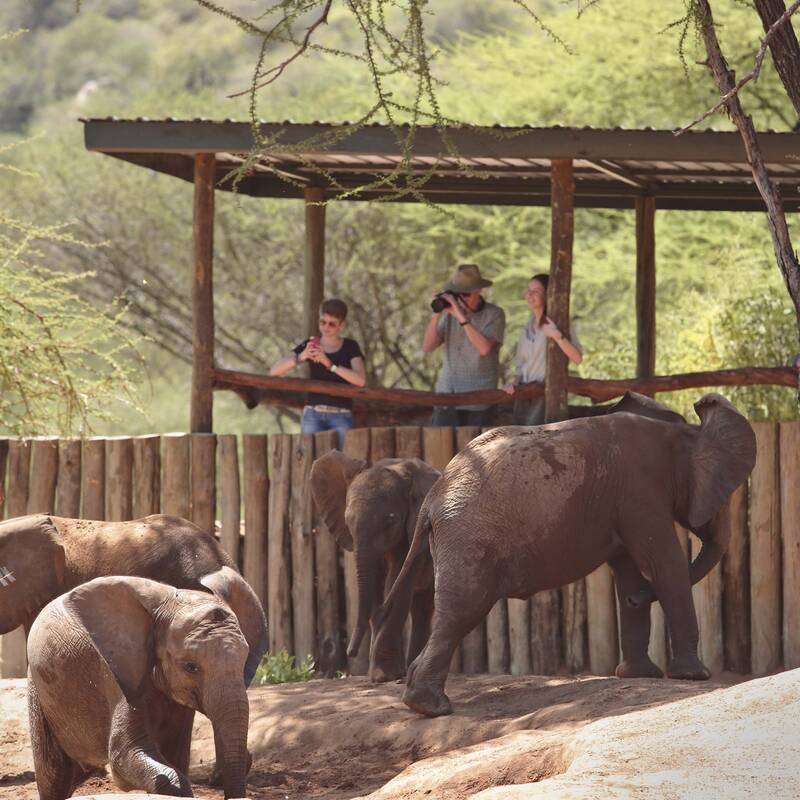
Reteti Elephant Orphanage visit
One-and-a-half hours, plus transfers
Visit the community-run Reteti Elephant Sanctuary in Samburu, for an intimate experience meeting the orphaned baby elephants who have been rescued from the surrounding regions. They are hand-reared by Samburu keepers, until they are ready to be released back into the wild.
More about Reteti Elephant OrphansOther lodges in Northern Kenya
Alternative places to stay in this same area.
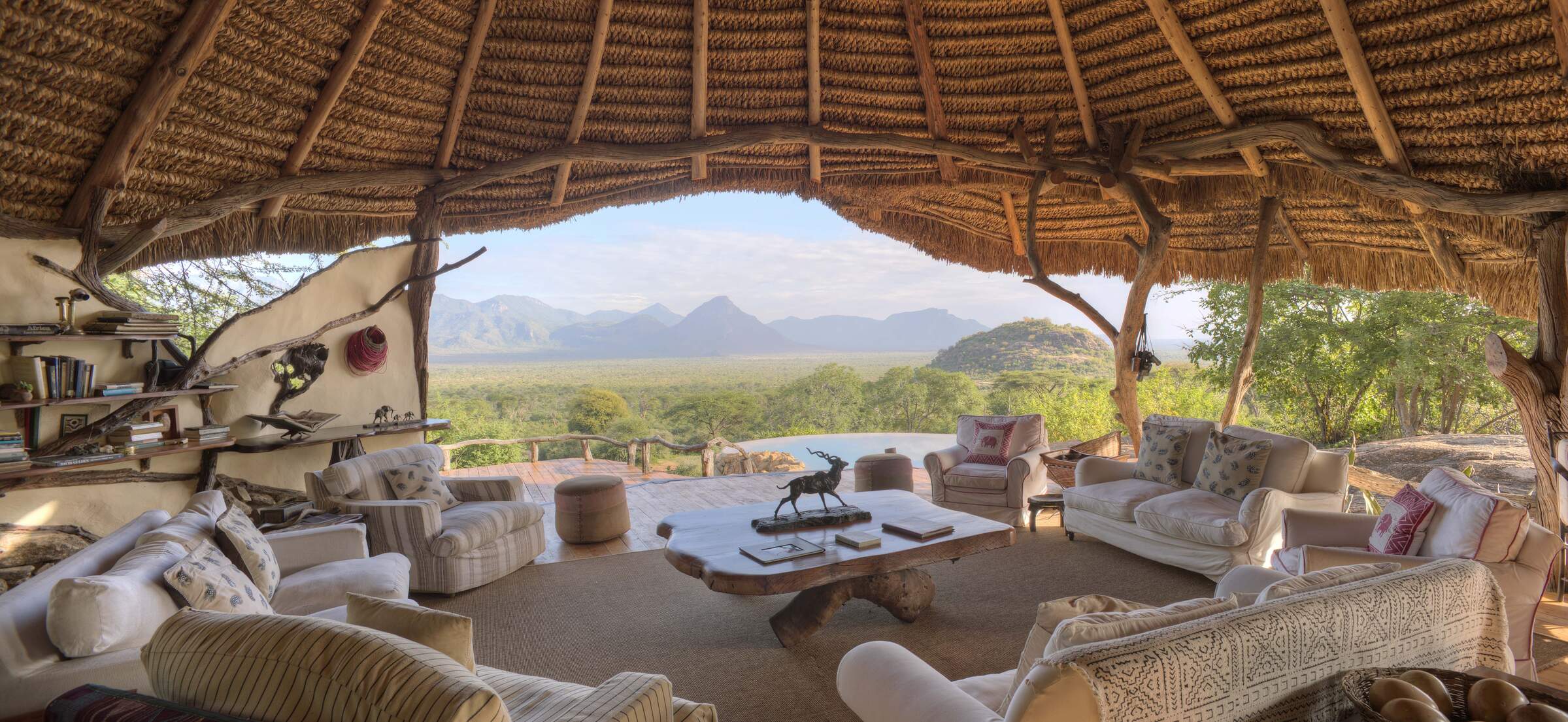
Sarara
Sarara is an outstanding safari lodge, with access to a vast wilderness region. Walks, drives and cultural experiences are on offer, all with very good guides.
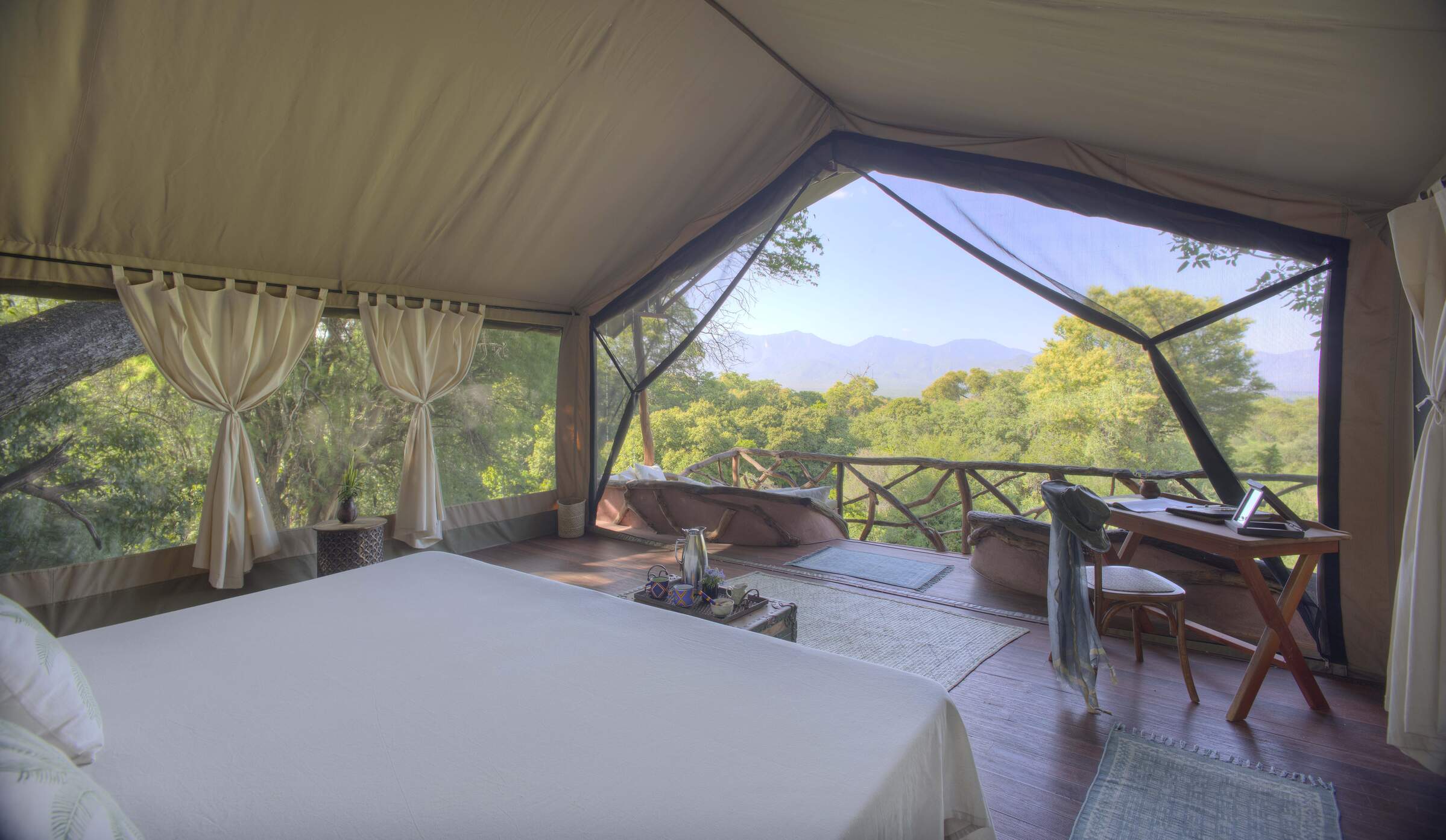
Sarara Treehouses
Sarara Treehouses is a luxurious camp with tents raised up in the forest canopy. Come here for the wildlife, walking and cultural activities, accompanied by excellent local guides.
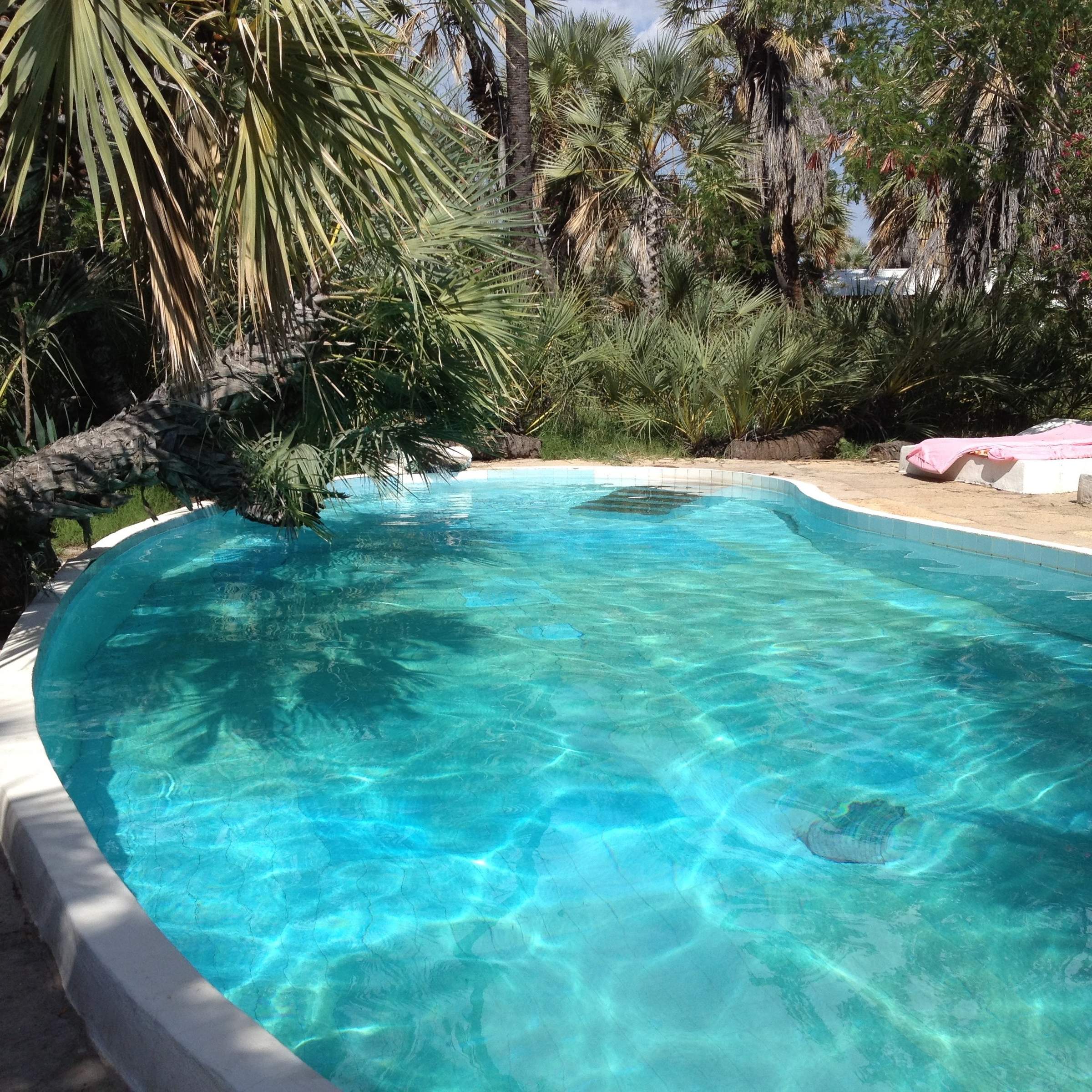
Oasis Lodge
Oasis Lodge is a basic hotel for adventurous travellers near the east shore of Lake Turkana.
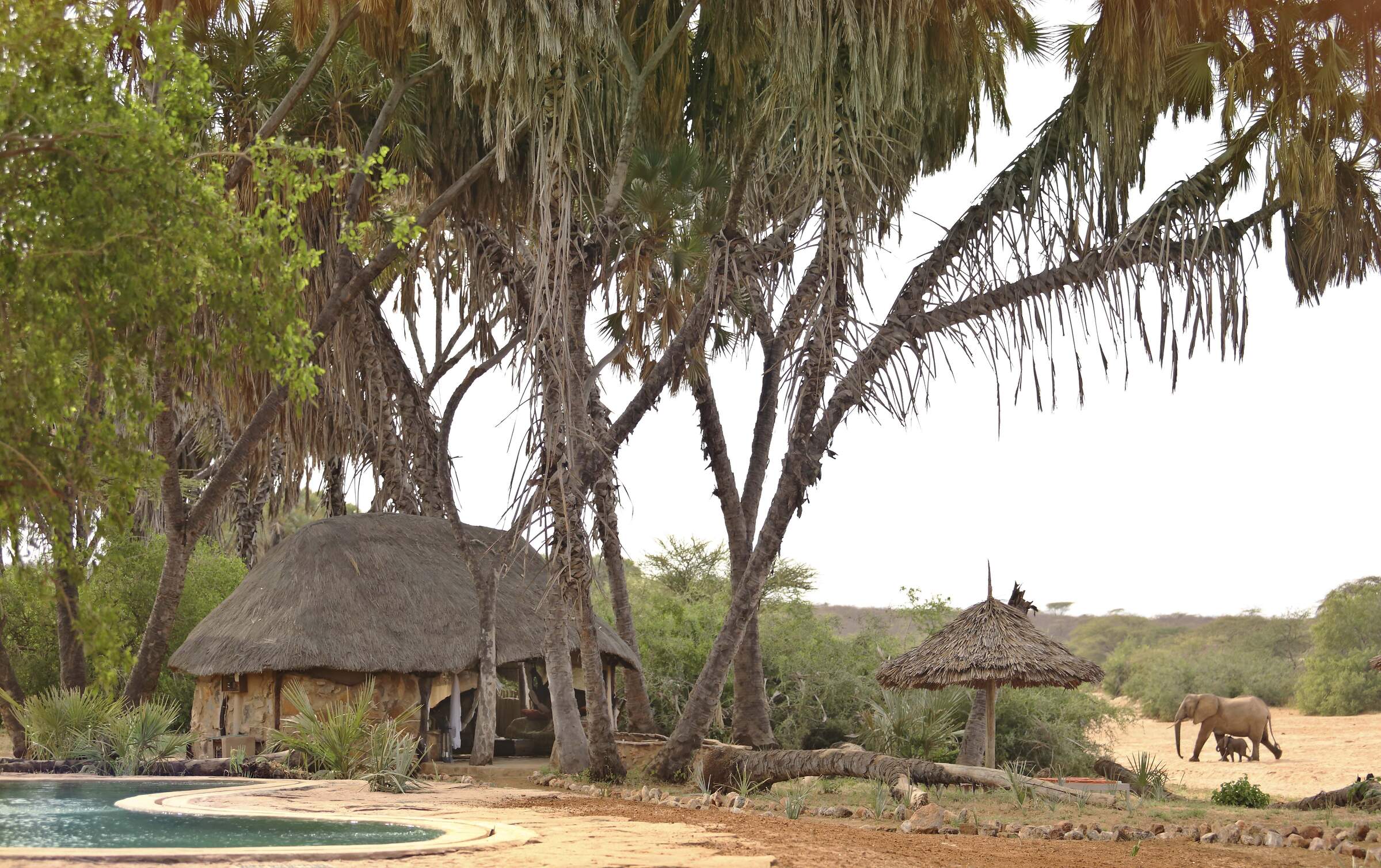
Saruni Rhino
Saruni Rhino is the only camp in the Sera Conservancy in northern Kenya, where guests are based when tracking black rhino on foot.
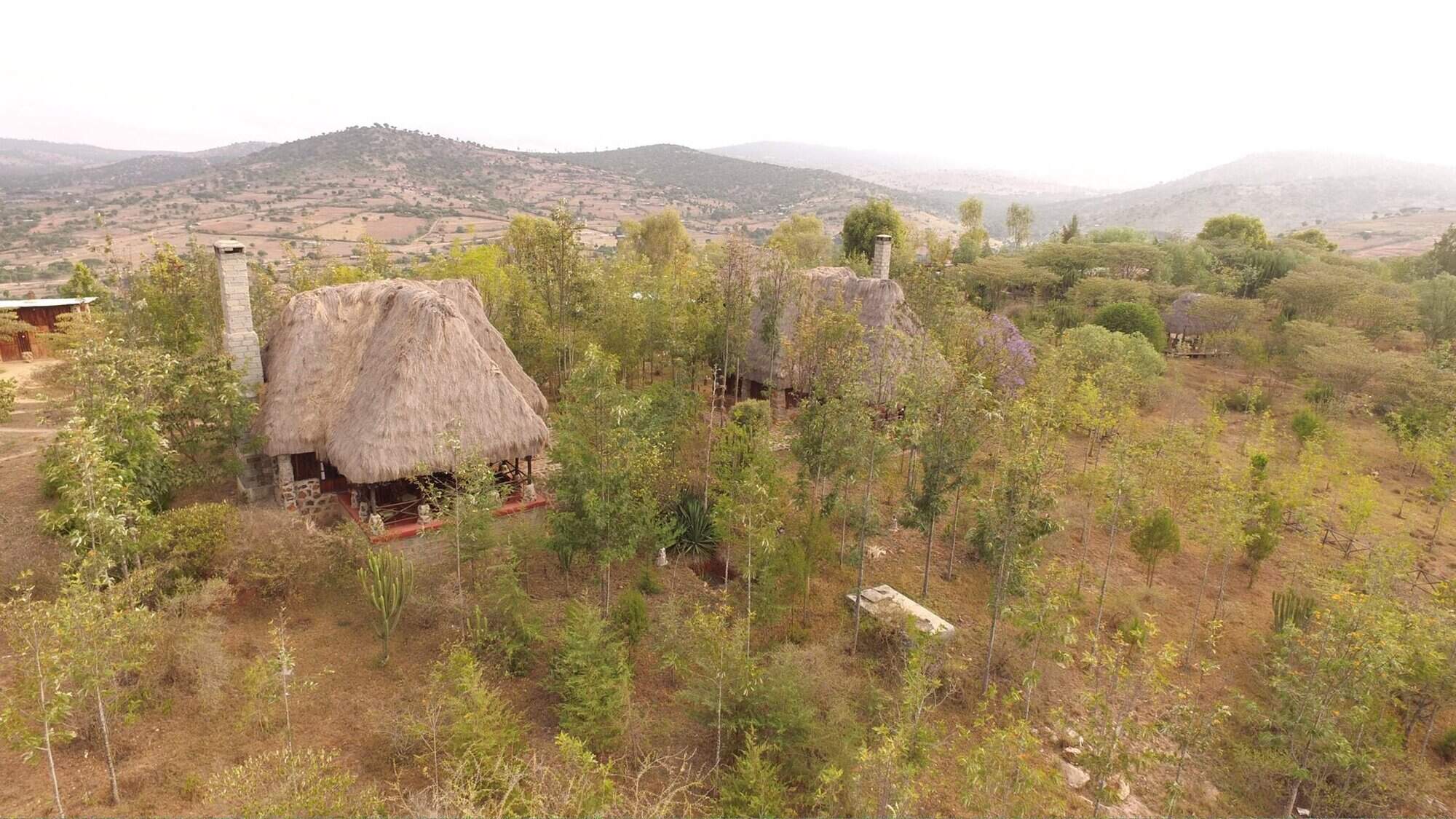
Ngari Hill Ecolodge
The 6-room Ngari Hill Ecolodge is the only full-service lodge in Maralal and makes a convenient overnight stay en route from Nairobi to Lake Turkana.
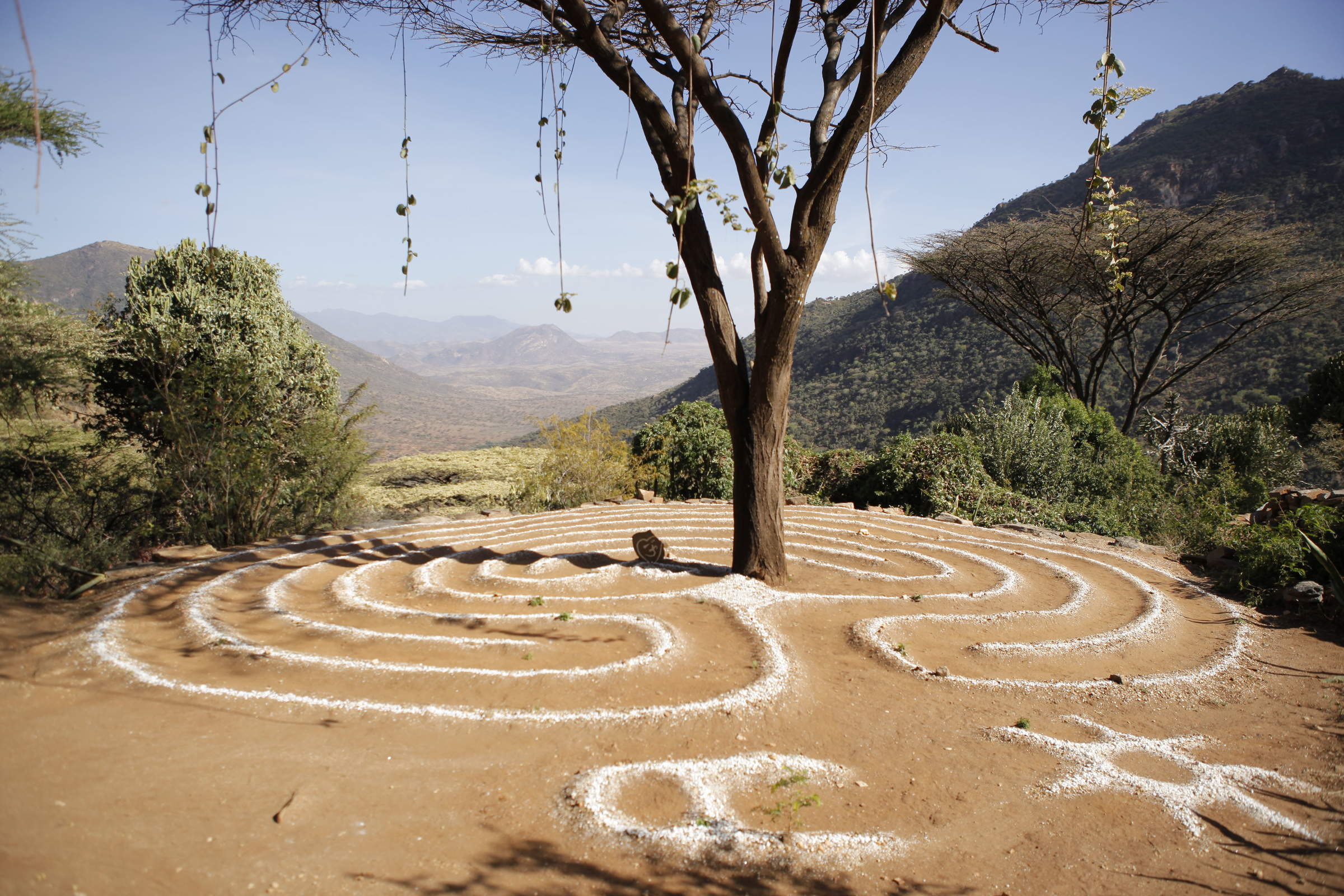
Desert Rose
This small, unique mountain lodge – Kenya’s northernmost luxury accommodation – is set amid the towering landscapes of Mount Nyiru, and is a superb place for rest and relaxation.
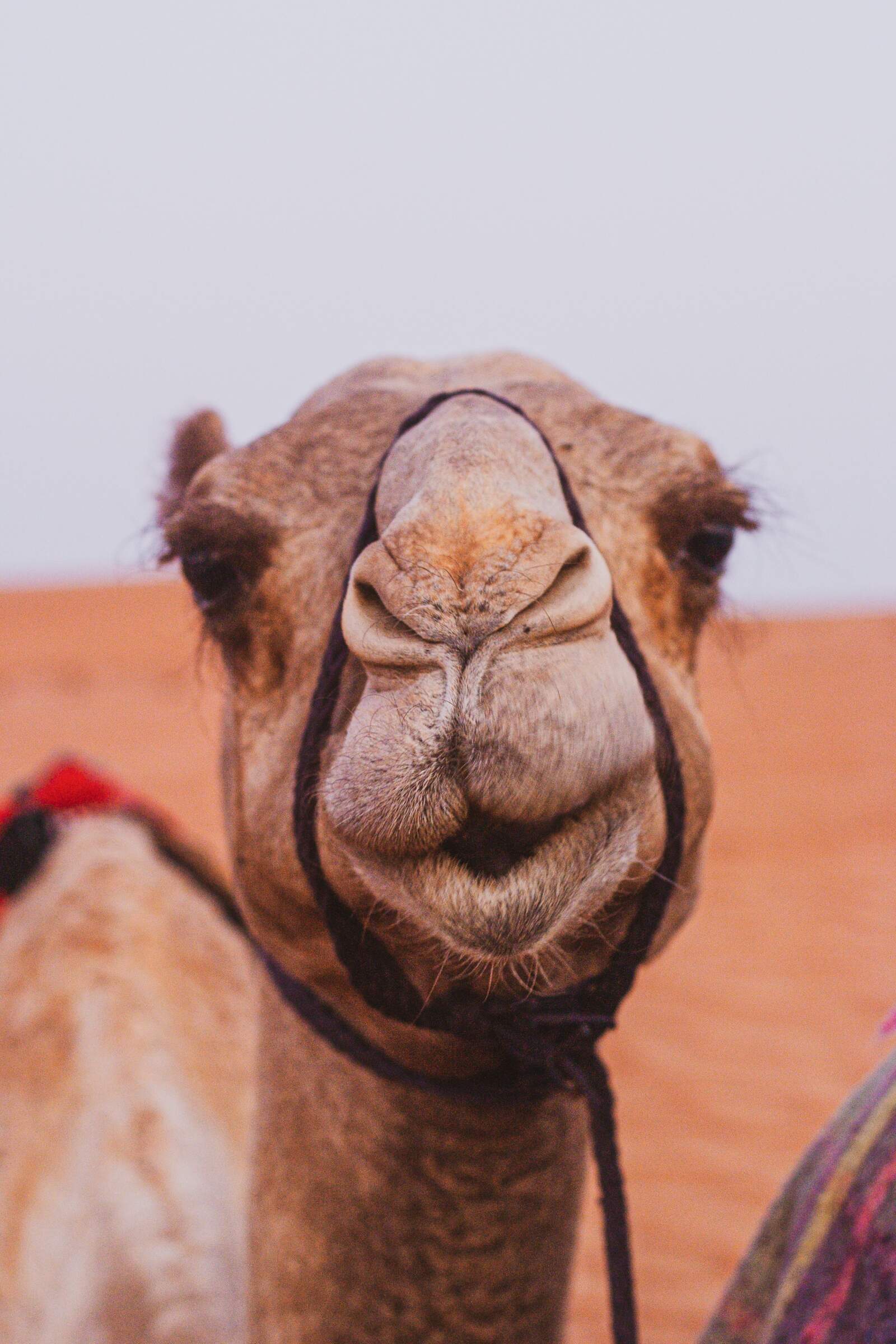
Wild Frontiers
Wild Frontiers Camel treks are based in the Milgis River area and run in various parts of northern Kenya between Lake Turkana and Laikipia.
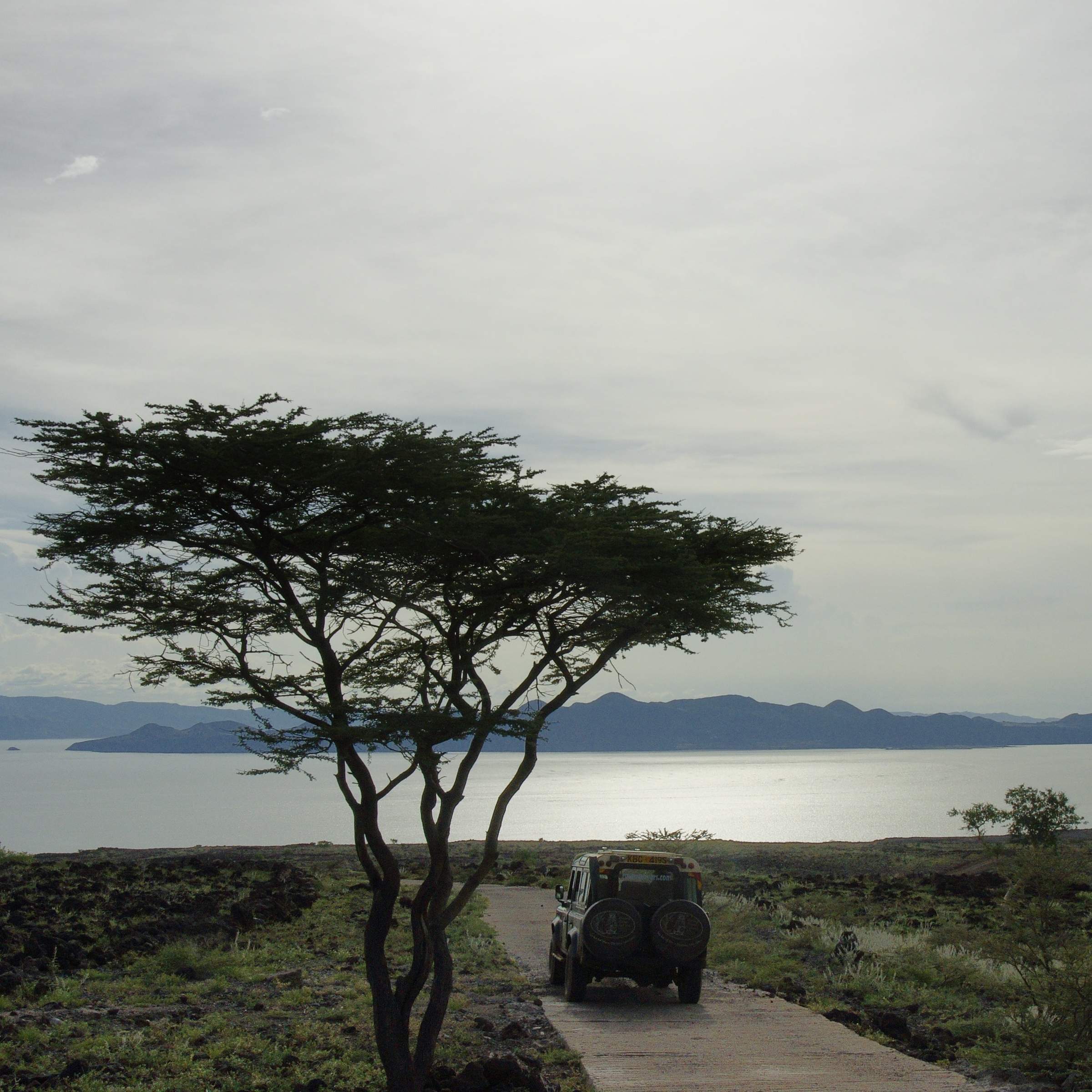
Palm Shade Camp
Palm Shade Camp is a simple camp for adventurous travellers near the east shore of Lake Turkana.
When to go to Northern Kenya
Our month by month guide: What it's like to visit Kitich Forest Camp in Northern Kenya
Jan
Feb
Mar
Apr
May
Jun
Jul
Aug
Sep
Oct
Nov
Dec
Kenya in January
Clear, hot days and warm nights make this high season a popular time for safaris and it’s also good for diving and snorkelling as water clarity is excellent and gets better as the dry season progresses. Most lodges and tented camps treat January after the New Year week is over, as mid-season, making it a good compromise in terms of value for money with reasonably reliable, dry weather and some greenery left in the landscape.
Expert Africa bases its description of climate and weather in January, like the other months of the year, on the climate records of roughly the last 100 years, and it's fair to say that the weather and seasons since the beginning of this century have been highly irregular and unpredictable.
- On average, January is the second driest month of the year
- Elephants dig waterholes in the dry riverbed in the Samburu reserve.
- Wildebeest and many antelope have their calving season, to February.
- Migrant birds are seen in huge numbers, especially in the Rift Valley.
- Sea water clarity around the coral reefs generally good.
Our view
Fantastic: the very best time to visit
Weather in January
Kenya in February
With the short dry season well established, the grass grazed down and wildlife gathering close to water points, this is still a good time for a safari. Good water clarity in the Indian Ocean's coastal waters makes for excellent diving and snorkelling conditions.
Expert Africa bases its description of climate and weather in February, like the other months of the year, on the climate records of roughly the last 100 years, and it's fair to say that the weather and seasons since the beginning of this century have been highly irregular and unpredictable.
- On average, February is the driest month of the year.
- It’s sometimes possible to swim with whale sharks at Diani Beach.
- Migrant birds are still seen everywhere, especially near water.
- This is usually peak calving season for wildebeest and many antelopes.
- This month is often the hottest of the year, especially on the coast.
Our view
A very good time to visit
Weather in February
Kenya in March
Hot, increasingly humid weather – with good diving and snorkelling conditions at the start of the month – gives way to rains and lower accommodation costs. Expert Africa bases its description of climate and weather in March, like the other months of the year, on the climate records of roughly the last 100 years, and predicting the seasons since the beginning of this century has been difficult.
March is the month when – traditionally – intensely hot conditions build up until a cloudburst finally happens at the end of the month or in early April, to relieve the humidity. As ever, regional variations across the country can greatly impact on visitors' experiences.
- Sea-water clarity is best for diving before the long rains start.
- Visitor numbers are low, though the Easter holidays can be busier.
- Night skies can be scintillatingly clear in early March.
- Cropped down savannah grasses can make it easier to see the wildlife.
- Temperartures climb high, especially at lower elevations.
Our view
A good time to visit, with pros & cons
Weather in March
Kenya in April
April sees the full onset of the southeast monsoon wind or kusi, which heralds the long rains. Temperatures drop soon after the rains are established and you’ll often have facilities largely to yourself in this more affordable low season, sometimes known as the "green season". The bush quickly springs to life, with greenery sprouting almost before your eyes. While you're likely to get a fair number of heavy showers, the breaks in the rain can yield sparklingly clear conditions.
With the dust settled and bright sun piercing the clouds, conditions can be sublime for photography, especially first thing in the morning or in the late afternoon with another storm brewing. You may be lucky, or you may find conditions very wet and muddy.
- A wet month, the coast often gets more than 300mm (12in) of rain.
- Sunny spells can provide great light for photography.
- Buffalo and zebra calving season often happens in this month.
- Baby crocodiles hatch, for example on Central Island in Lake Turkana.
- Palearctic migrant birds gather to fly north to breeding grounds.
Our view
A time to avoid if possible
Weather in April
Kenya in May
While game viewing can be trickier as vegetation runs riot, between the cloudbursts the colours and light are great for photography at this time of year. Expert Africa bases its description of climate and weather in May, like the other months of the year, on the climate records of roughly the last 100 years, and while it's reasonable to expect heavy rains in many parts during this month, especially on the coast, the rains don't always come evenly or in some areas come at all.
In an El Niño year, the so-called long rains that normally are established across much of the country by May can be meagre, to the despair of farmers. On the other hand in a La Niña year, the long rains can bring floods. On the coast, the monsoon winds make the climate much more predictable, with heavy rains common throughout this month.
- Frogs breed in the ponds in the Arabuko Sokoke Forest near Watamu.
- Wildebeest, impala and other grazers are in rut (the breeding season).
- Kilimanjaro looks its best as heavy rain falls as snow on the summit.
- There's a sharp peek of rainfall on the coast with many rainy days.
- Accommodation prices are uniformly low, while some camps close.
Our view
A time to avoid if possible
Weather in May
Kenya in June
The rains give way to cloudy, cooler weather, often making for comfortable conditions by the end of the month, especially in the highlands. Starting from mid-June or the beginning of July and running until the end of October, this is the high season, and accordingly has higher accommodation rates and – at least until early September – higher numbers of visitors.
While the early part of June can often be rainy on the coast, it can be a great time to go on safari, with fresh greenery, many young animals and good photographic conditions with clear air.
- The Taru Desert, inland from the coast, is carpeted with flowers.
- The Lake Turkana Cultural Festival is held in Loiyangalani.
- Madaraka Day (commemorating self rule) is 1 June.
- The annual Lewa marathon runs a course through the wildlife.
- The Diani Rules "sports" event rips up the rulebook at Diani Beach.
Our view
A good time to visit, with pros & cons
Weather in June
Kenya in July
Kenya’s “winter" season sets in (winter is a misnomer but locals feel the change), and the highlands can be rather grey. Skies are often cloudy and the days can be surprisingly cool, with an average daytime high in many highland safari areas of 15-20°C and night-time temperatures dropping below 10°C in Nairobi and the highlands. Lower parts of the country and the coast are usually warm and dry, typically reaching highs of around 25°C with lows in the high teens.
As this is the start of the high season, coinciding with the usual arrival of the wildebeest migration in the Maasai Mara, July is a busy month. Ask your Expert Africa specialist to advise on how to avoid the crowds, which is not that difficult to do.
- The wildebeest migration usually reaches the Maasai Mara in July.
- Simbi Lake (Kisumu) and Crater Lake (Naivasha) can attract flamingoes.
- Watersports start to pick up and some surfing is possible at Malindi.
- Afternoon thunderstorms are a common feature in the Maasai Mara.
- The sea can be choppy along the coast, making diving difficult.
Our view
A good time to visit, with pros & cons
Weather in July
Kenya in August
The Great Migration fills the plains of the Maasai Mara, and school’s out, so the park roads are full of tourists – ask your Expert Africa specialist for advice on crowd avoidance tactics. Choose a private conservancy rather than a public national park or national reserve for quieter conditions.
Like July, August is generally mild and relatively dry in the safari areas, but it can be very chilly in the highlands, even in the middle of the day, and hail occasionally falls above altitudes of around 2,400m (8,000ft). Nairobi can be disappointingly overcast, with low cloud.
- Apart from Christmas holidays, this is the busiest month of the year.
- Late August sees peak wildebeest drama at the Mara River crossings.
- Coastal winds are good for kite- and wind-surfing.
- Few mosquitoes are around at this generally dry time of year.
- The annual Camel Derby takes place in the Samburu capital, Maralal.
Our view
A good time to visit, with pros & cons
Weather in August
Kenya in September
The skies clearing of cloud signals the start of hot, dry weather with little chance of rain – and, after the first few days of the month, far fewer visitors – making the latter part of September a good time for a quieter safari. While early September is often good for dramatic migration crossings along the Mara River, you might consider deliberately postponing your trip until later in the month, when the migration can still be very impressive and visitor numbers fewer.
If tourist surges are somewhat predictable, however, the patterns of the wildebeest migration are more volatile, and like all of Expert Africa's climate and weather assessments, they are based on accumulated years of experience rather than guaranteed certainty.
- This is still high season, with prices to match.
- Many river crossings take place on the Mara river in both directions.
- Natural bush fires flush out insects and small animals for predators.
- The Rift Valley Music Festival takes place by Lake Naivasha.
- With school holidays over by early September, late-month is quieter.
Our view
Fantastic: the very best time to visit
Weather in September
Kenya in October
Still hot, mostly dry and not too busy, this is many people’s preferred month for a safari, and it’s also good for diving and snorkelling. The wildebeest and zebra herds of the great migration are often still to be seen, though in dwindling numbers. The swamps of Amboseli attract thirsty wildlife including large herds of elephants.
While we wouldn't expect much rain across most of the country this month, the climate has become so unpredictable that you can never say never, and the possibiity of the short rains – usually associated with November to mid-December, starting early, can't be discounted.
- This month sees the tail end of the great migration in the Mara.
- Palearctic migrant birds start to arrive, staying until March.
- Turtle nests hatch at Watamu, until November.
- Amboseli elephants focus on the swamps for their daily water.
- The Indian Ocean monsoon winds turn from southeast to northeast.
Our view
A very good time to visit
Weather in October
Kenya in November
The northeast monsoon wind or kaskazi heralds the start of the “short rains", usually some time in the second half of the month. From November to mid-December, this is the low season, and accordingly has lower accommodation rates and lower visitor numbers. Across most of the country you can expect warm, somewhat cloudy weather, with occasional heavy showers and localised flooding.
Expert Africa bases its description of the climate in November, like the other months of the year, on the records of roughly the last 100 years, and it's fair to say that the seasons since the beginning of this century have been highly irregular and unpredictable: some years the short rains don't come at all, or don't reach every part of the country. In an El Niño year, the November short rains can be very heavy, but in a La Niña year, they can fail completely.
- Swimming with dolphins in Lamu can be done from now until April.
- Birders gather at Ngulia in Tsavo West to ring Palearctic migrants.
- The Lamu Cultural Festival takes over the town and Lamu Creek.
- Agricultural shows often take place regional market towns.
- This is low season, so camps can be great value, with special offers.
Our view
A good time to visit, with pros & cons
Weather in November
Kenya in December
In a typical December, the rains usually finish by middle of the month, leaving the landscape looking its best, under clear blue skies, and heralding the start of the second peak tourist season from around 20 December to the first week of January. Our assessment of the likely weather in December, like the other months of the year, is based on climate records, and it's fair to say that the seasons since the beginning of this century have been highly irregular and unpredictable.
Christmas can sometimes be wet, but most years the rains have finished a week or two earlier, with the festive season ushering in the perfect combination of clear skies and sunshine by day and starry nights.
- Christmas and New Year are busy, with the lodges and camps full.
- Rates are highest after 24 Dec, with supplements on public holidays.
- Republic Day and Independence day are celebrated on 12 December.
- Good kite- and wind-surfing restarts, with strong northeasterly winds.
- Mango season begins, providing excitement for primates and elephants.
Our view
A good time to visit, with pros & cons
Weather in December

Looking for inspiration on where to travel next?
Visit our trip chooser to explore your options and find inspiration for your perfect African adventure
Inspire me